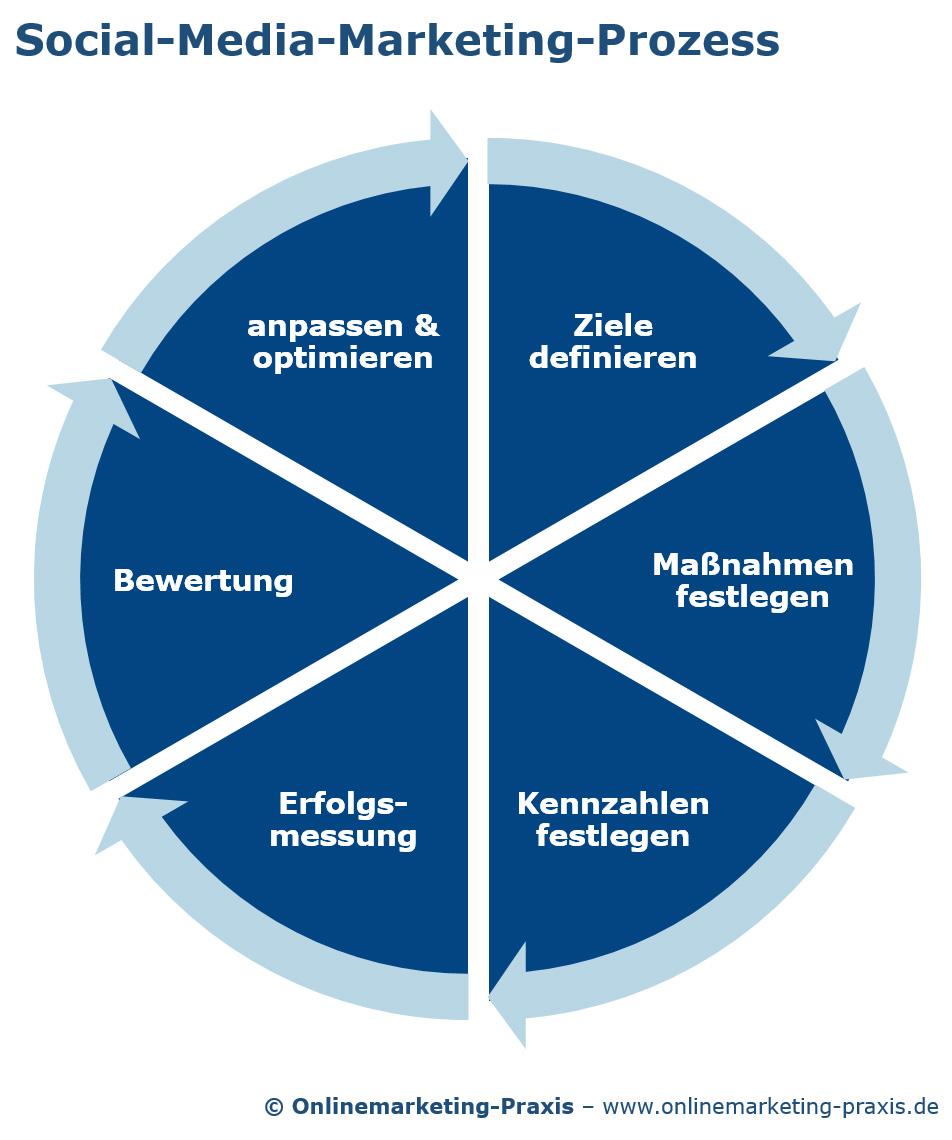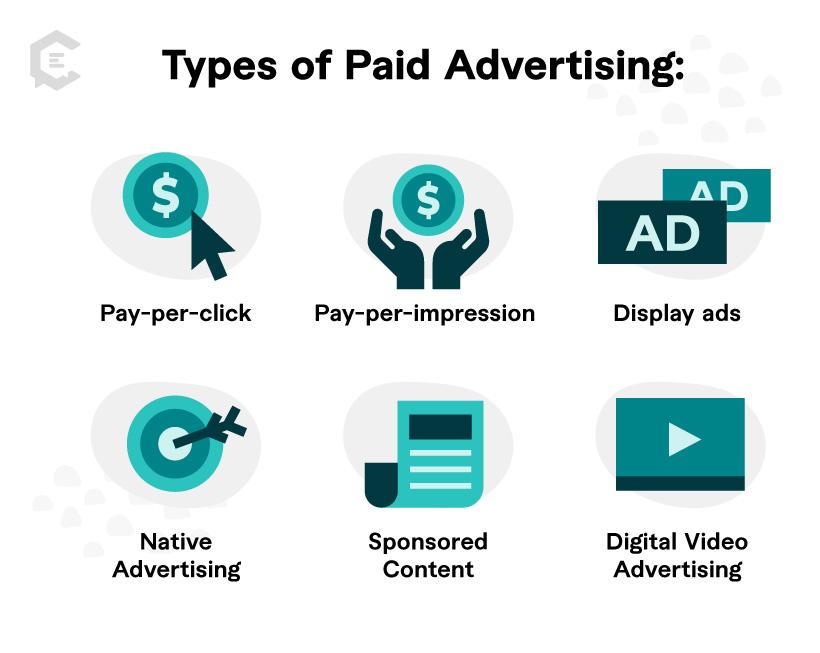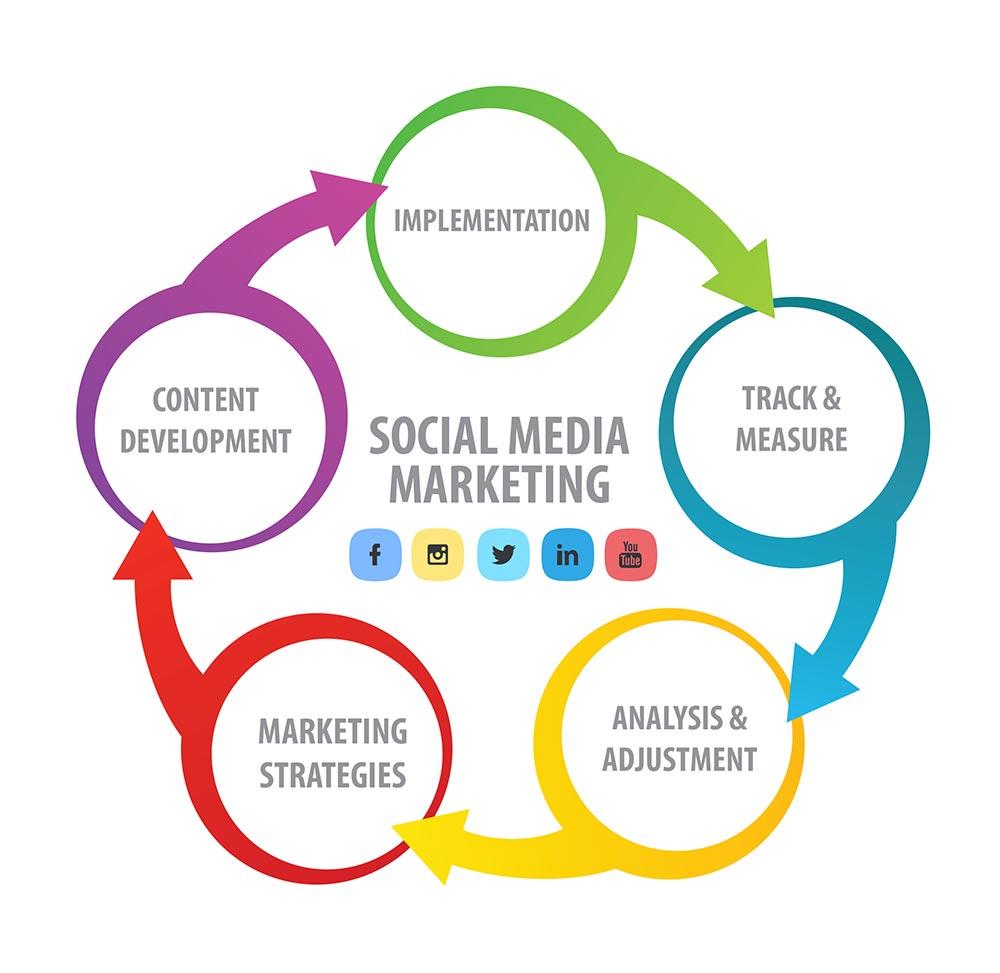Introduction:
Hey there! Let’s talk about something that’s become a crucial player in the world of business today—social media marketing. If you’re a business owner, a marketer, or even just someone curious about the online landscape, you’ve probably heard the buzz about social media. But what exactly is social media marketing, and why should you care? Well, in 2025, it’s not just a trend; it’s an essential strategy for connecting with your audience, building brand loyalty, and driving sales.
In our digital age, where attention spans are shorter than ever, understanding how to effectively navigate platforms like Instagram, TikTok, and LinkedIn can set you apart from the competition. Whether you’re starting from scratch or looking to refine your existing approach, creating a robust social media marketing strategy is key. So, grab your coffee, and let’s dive into the ins and outs of social media marketing and how you can craft a strategy that not only resonates with your target audience but also drives results. Ready? Let’s go!
Understanding Social Media Marketing and Its Importance
In today’s digital landscape, social media marketing has become an indispensable tool for businesses seeking to connect with their audience. It goes beyond merely posting updates; it encompasses a strategic approach to enhance engagement, build brand loyalty, and drive conversions. The significance of social media marketing lies in its ability to reach a vast audience, providing brands with an prospect to humanize their image and create meaningful interactions.
Social media platforms are not just channels for advertising; they serve as community hubs where consumers engage with brands and each other. This dynamic interaction fosters trust, which is essential for customer retention.By leveraging social media marketing,companies can:
- Increase Brand Awareness: consistent and targeted posts can significantly enhance visibility.
- Engage with Customers: Regular interaction helps to nurture relationships and gather feedback.
- Drive Traffic: Effective social media strategies lead potential customers to websites, boosting conversions.
- Generate Leads: Promotions and campaigns can capture leads and expand customer lists.
As we approach 2025, crafting a social media marketing strategy is essential. Key elements to consider include:
| Element | Description |
|---|---|
| Target Audience | Identify who your customers are based on demographics and interests. |
| Platform Selection | Choose the right platforms where your audience is most active. |
| Content strategy | Develop engaging content that resonates with your audience. |
| Analytics | Utilize analytics tools to measure performance and optimize strategies. |
Moreover, staying updated with trends is crucial. In 2025, expect an increased emphasis on video content, personalized marketing, and the integration of AI tools to analyze consumer behavior. By adopting these innovations, brands can enhance their marketing strategies, ensuring relevance in an ever-evolving digital world.
the importance of authenticity cannot be overstated. Today’s consumers value transparency and genuine engagement. Companies that showcase their values and connect with their audience on a personal level will stand out in the crowded social media landscape. Your social media marketing strategy should not just aim for visibility but foster real connections that ultimately drive success.

The Evolving Landscape of social Media in 2025
As we look towards 2025, the world of social media is not just expanding; it’s transforming into a dynamic ecosystem that emphasizes authenticity and engagement like never before. Users are increasingly prioritizing connections that feel genuine, driving brands to rethink their approaches to social media marketing. Platforms are evolving, and with them, the strategies we need to implement to effectively reach our audiences.
In this vibrant landscape, video content continues to dominate, but it’s the short-form videos and live streaming that are capturing attention. Brands must harness these formats to create captivating stories that resonate and foster community. Consider incorporating the following elements into your strategy:
- Interactive Content: Polls, quizzes, and Q&A sessions can boost engagement.
- User-generated Content: Encouraging customers to share their experiences builds trust.
- Augmented Reality Experiences: Utilizing AR filters for campaigns can enhance user experience.
Data analytics will play a crucial role in navigating this evolving terrain.In 2025, the ability to analyze user behavior across multiple platforms will allow brands to tailor their strategies with precision. Engaging with your audience will require not only understanding what content they enjoy but also when and how they prefer to engage with it.Establishing a robust data tracking system is essential to get insights into:
| key Metric | Description |
|---|---|
| Engagement Rate | Assessing likes, shares, and comments on posts. |
| Reach | Understanding how many unique users see your content. |
| Conversion Rate | Tracking actions taken after interacting with your content. |
Moreover, brand loyalty becomes paramount as consumers are more likely to support brands that align with their values. A triumphant strategy in 2025 will include a clear stance on social issues and sustainability. Highlighting your brand’s ethical practices and community involvement can foster a deep emotional connection with your audience. Here’s how to integrate this into your marketing plan:
- Transparent Communication: Share your brand’s mission and values openly.
- Community Engagement: Participate in local initiatives to demonstrate commitment.
- Partnerships with Influencers: Collaborate with influencers who share your values for authentic outreach.
lastly, the rise of AI and machine learning stands to revolutionize social media marketing strategies. Utilizing AI tools can not only automate various processes but also enhance personalization efforts. By analyzing customer data, AI can help brands to craft tailored content that speaks directly to their audience’s preferences and needs, ensuring your marketing strategy is both efficient and effective.

Key Platforms to Focus on for Effective Marketing
In 2025, the landscape of social media marketing will continue to evolve, making it crucial to focus on specific platforms that drive the best engagement and results for your brand. Understanding where your audience spends their time is essential for crafting a successful strategy. Here are some key platforms to incorporate into your marketing mix:
- Instagram: With its visual-centric approach, Instagram remains a powerhouse, especially for brands targeting younger demographics. Utilize stories, reels, and shopping features to engage users creatively.
- facebook: Although its popularity among younger users is declining, Facebook’s vast user base and advanced advertising capabilities make it a must for reaching a diverse audience. Leverage groups and events to enhance community engagement.
- TikTok: This platform’s explosive growth cannot be ignored. TikTok allows brands to connect with Gen Z and Millennials through short, engaging video content.Embrace trends and challenges to enhance your brand’s visibility.
- LinkedIn: Perfect for B2B marketing, LinkedIn is ideal for sharing industry insights, networking, and generating leads. Publish thought leadership content and engage in relevant discussions to establish your authority.
- Twitter: Known for its real-time engagement, Twitter is excellent for customer service and keeping your audience updated. Use threads and polls to encourage interaction and build a loyal following.
To maximize the effectiveness of your marketing efforts, consider the unique features and audience demographics of each platform. For instance, while Instagram is great for stunning visuals, LinkedIn’s professional habitat is better suited for B2B communication. Tailor your content to resonate with the specific audience on each platform.
In addition to the platforms mentioned, it’s worth exploring emerging social media channels and trends. This could include platforms like BeReal, which emphasizes authenticity, or even decentralized social networks that promote user privacy. Staying ahead of the curve can give your brand a competitive edge.
Lastly, don’t overlook the power of integrating various platforms to create a cohesive brand presence. Utilizing tools for cross-promotion can help sync your message across channels, ensuring your audience has a unified experience. Here’s a simple table to visualize potential content types for each platform:
| Platform | Content Type |
|---|---|
| Image posts, Reels, stories | |
| Live videos, Events, Group interactions | |
| TikTok | Short videos, Challenges, Trends |
| Articles, Webinars, Case studies | |
| Tweets, Polls, Threads |

Identifying Your Target Audience in the digital Age
in the rapidly evolving landscape of digital marketing,understanding your target audience is more crucial than ever. Gone are the days when businesses could rely solely on broad demographics; today, precision is key. To effectively reach and engage your audience, you must dig deeper than age, gender, and location. This involves a multi-faceted approach that combines data analysis with a genuine understanding of consumer behavior.
start by leveraging analytics tools to gather insights about your potential customers. Platforms like Google Analytics and social media insights can provide invaluable data regarding:
- Age and Gender: Understand the basic demographics of your audience.
- Interests and Hobbies: Discover what captivates your audience outside of your brand.
- Online Behavior: Analyze how your audience interacts with your content.
However, numbers alone tell only part of the story. It’s essential to complement this data with qualitative research. conduct surveys or interviews to gather insights about your audience’s needs and pain points. This direct engagement not only gives you a clearer picture of who your audience is but also builds a sense of community and trust.
creating buyer personas can be a game-changer in this process. These semi-fictional characters represent various segments of your audience.When outlining these personas, consider including:
| Persona name | Demographics | Interests | Goals |
|---|---|---|---|
| Tech-Savvy Millennial | 25-35, Urban | Gadgets, Sustainability | Stay updated on tech trends |
| Busy Parent | 30-45, suburban | Family Activities, Time Management | Find convenient solutions for daily life |
By crafting these personas, you can tailor your marketing strategies to resonate deeply with each segment. This personalized approach not only enhances engagement but also boosts conversion rates, as your messages will feel more relevant and relatable.
don’t forget the importance of ongoing analysis. The digital landscape is constantly shifting, and so are consumer preferences. Regularly revisit your audience data and adjust your strategies accordingly to stay ahead of the curve. By maintaining a flexible and adaptive approach, you can ensure that your messaging remains relevant and impactful in an ever-changing digital environment.

Crafting Compelling Content That Engages and Converts
In today’s digital landscape, crafting content that resonates with your audience is more crucial than ever.When it comes to social media marketing, your content serves as the cornerstone of your strategy. To engage and convert, your content must not only inform but also inspire action. Here are some key elements to consider:
- Know Your Audience: Understanding your target demographic is crucial. Tailor your messaging to their interests, pain points, and preferences.
- Be Authentic: Authenticity builds trust. Share real stories, behind-the-scenes glimpses, and user-generated content to foster a genuine connection.
- Use eye-Catching Visuals: Posts with visuals are 94% more likely to be shared. Invest in high-quality images and videos that align with your brand’s voice.
- Incorporate Strong CTAs: Each piece of content should include a clear call-to-action. Whether it’s signing up for a newsletter or sharing a post, make it easy for your audience to know what to do next.
Furthermore, the tone of your content should resonate with your brand identity. A amiable, conversational tone can enhance relatability, while a more formal voice might be suitable for B2B audiences. Consistency in tone helps to reinforce your brand image and build a loyal following.
Leverage analytics to refine your approach.By tracking engagement metrics such as likes, shares, and comments, you can gain insights into what types of content perform best. This data-driven approach allows for continuous betterment in your content strategy.
| Content Type | Purpose | Best Practices |
|---|---|---|
| Blog Posts | In-depth data | Use keywords, provide value |
| Videos | Engagement and storytelling | Keep it short, tell a story |
| Infographics | Visual data portrayal | Make it shareable, informative |
Lastly, remember that the landscape of social media is ever-evolving. Staying ahead of trends and being adaptable in your content approach is key. Engage with your audience in real-time, respond to comments, and be open to feedback. By doing so, you not only enhance engagement but also create a community around your brand that is more likely to convert.

Leveraging Data Analytics for Informed Decisions
In the rapidly evolving landscape of social media marketing, the ability to harness the power of data analytics is essential for crafting strategies that resonate with audiences.By diving deep into analytics, marketers can uncover vital insights that inform their decision-making process, leading to more effective campaigns and higher engagement rates.
One of the primary advantages of leveraging data analytics is the ability to understand audience behavior. This can include:
- Demographics: Age, gender, location, and interests.
- Engagement Patterns: When are your followers most active?
- Content Preferences: What type of posts generate the most interaction?
By analyzing this data, marketers can tailor their content to meet the specific needs and interests of their target audience. This personalization fosters stronger connections and drives greater engagement, ultimately resulting in higher conversion rates.
Another critical component of data analytics is tracking the performance of your campaigns. By employing tools like Google Analytics, social media insights, and third-party software, you can monitor key performance indicators (KPIs) such as:
| Key Performance Indicator | Description |
|---|---|
| Click-Through Rate (CTR) | Percentage of users who click on your content compared to those who view it. |
| Conversion Rate | Percentage of users who take a desired action after engaging with your content. |
| Engagement Rate | Rate at which users interact with your posts (likes, shares, comments). |
Understanding how each of these metrics performs can illuminate what is working and what isn’t. Use this data to refine your approach, adjust your messaging, and experiment with different formats or platforms. continuous improvement driven by analytics can lead to remarkable growth in your social media presence.
Lastly, data analytics can enhance your competitive edge. By keeping an eye on industry trends and competitor performance, you can identify gaps in your strategy. This proactive approach enables you to adjust your tactics promptly, ensuring that your marketing efforts remain relevant and impactful.
Ultimately,the integration of data analytics into your social media marketing strategy not only leads to informed decision-making but also drives success in an increasingly competitive digital market. Embrace the numbers,understand your audience,and watch your marketing effectiveness soar.

Building a Consistent Brand Voice Across Channels
In the fast-paced world of social media marketing,maintaining a consistent brand voice across various channels is crucial for building trust and recognition. Your audience interacts with your brand on different platforms, and each touchpoint should feel familiar, yet tailored to the unique characteristics of that channel. This consistency not only reinforces your brand identity but also helps to create a cohesive customer journey.
to achieve this, start by defining your brand’s core values and personality. Ask yourself:
- What emotions do we want to evoke?
- What tone aligns with our audience’s preferences?
- Are we formal,casual,playful,or authoritative?
Once you have a clear picture of your brand voice,create a comprehensive style guide. This document should include:
- Language and Tone: use examples of how to communicate on different platforms—more casual on Instagram, more informative on LinkedIn.
- Visual Elements: Specify brand colors, typography, and graphic styles that reflect your voice.
- content Guidelines: Outline the types of content to share, such as storytelling, educational posts, or user-generated content.
Consistency also involves paying attention to how your audience interacts with your brand. Monitor engagement and feedback across channels. Use social listening tools to analyze how your brand voice resonates with followers. This data can definitely help you adjust your messaging to ensure it remains relevant and compelling.
it’s essential to train your team. ensure everyone involved in content creation understands the brand voice and style guidelines. Regular workshops or briefings can be helpful in aligning the team’s efforts, creating a unified approach to communication that accurately reflects your brand’s identity.
To visualize how different platforms can reflect a unified brand voice, consider the following table:
| Platform | Tone | Content Type |
|---|---|---|
| Casual & Engaging | Visual Stories & Reels | |
| Professional & Informative | Industry Insights & articles | |
| Concise & Witty | Short Updates & Polls | |
| Friendly & Community-Oriented | Events & Live Videos |
By prioritizing a consistent brand voice, you not only make your messaging more effective but also foster deeper connections with your audience. In a world where consumers are bombarded with content, a clear and consistent voice will help your brand stand out and create lasting impressions.
Creating a Content Calendar That Works for You
crafting a content calendar can seem daunting, but with the right approach, it can become your best freind in managing social media marketing effectively. A well-structured content calendar helps you plan, organize, and execute your social media strategy with ease. It keeps your content consistent and relevant, ensuring that you never miss an opportunity to engage with your audience.
To create a calendar that truly works for you, start by defining your objectives. Understand what you want to achieve through your social media efforts. Whether it’s increasing brand awareness, driving website traffic, or boosting engagement, clear goals will guide your content creation. Once you have your objectives set, consider the following:
- Identify Your Audience: Know who you are speaking to. Create content that resonates with their interests and needs.
- Choose Your Platforms: Not all social media platforms are created equal. focus on the ones where your audience is most active.
- Content Types: Diversify your content. Think about incorporating videos, infographics, and user-generated content to keep things fresh.
- Scheduling: Determine the best times to post. Use analytics to find when your audience is most engaged.
Utilizing a digital tool to manage your calendar can streamline the process tremendously. There are plenty of options available, from Google Sheets to dedicated platforms like Trello or Asana. Choose one that aligns with your workflow and allows for easy collaboration if you’re working with a team. Also, consider color-coding your posts to differentiate between content types or campaigns, making it visually appealing and easier to navigate.
Lastly, be flexible. A content calendar is a guide, not a rulebook. Social media is unpredictable, and trends can shift overnight. Allow room for spontaneous content that can capitalize on current events or viral trends.Make it a habit to review your calendar regularly, adjusting your strategy as needed based on what’s working and what’s not.
| Day | Content Type | Platform | Time | Status |
|---|---|---|---|---|
| Monday | Blog post | 10:00 AM | Scheduled | |
| Wednesday | Video Tutorial | 2:00 PM | In Progress | |
| Friday | Poll | 4:00 PM | Planned |
By following these guidelines, you can design a content calendar that caters to your unique needs and facilitates your social media marketing goals.Remember, the key is to stay organized, be adaptable, and continuously engage with your audience. Happy planning!
engaging with Your Audience: The Power of Community
Building a strong community around your brand is essential in today’s digital landscape.Engaging with your audience fosters loyalty and creates a sense of belonging that can transform casual followers into passionate advocates. When you prioritize community engagement,you encourage authentic interactions,which are crucial in a world where consumers crave genuine connections.
Here are some effective strategies to strengthen your community engagement:
- Be Responsive: quick responses to comments and messages show your audience that you value their input. This simple act can greatly enhance their experience and loyalty.
- Create Interactive Content: Polls, quizzes, and Q&A sessions are excellent ways to involve your audience. This not only boosts engagement but also provides valuable insights into their preferences and opinions.
- Highlight User-Generated Content: Share posts from your followers that showcase your product or service.This not only makes your audience feel appreciated but also encourages others to do the same.
- Host Live Events: Live streams and webinars provide an opportunity for real-time interaction. Engaging directly with your audience creates an atmosphere of community where members feel valued and heard.
Consider implementing a community-driven approach in your content marketing strategy. For instance, you can create dedicated spaces for discussions, such as forums or social media groups. These platforms not only enable dialog but also foster a collaborative environment where audience members can share ideas and experiences.
To effectively measure the impact of your community engagement efforts, consider using metrics such as:
| Metric | Description |
|---|---|
| engagement rate | Tracks likes, shares, and comments relative to your follower count. |
| Community Growth | Measures the increase in followers or group members over time. |
| User-Generated Content | Counts the number of posts created by your audience featuring your brand. |
| Sentiment Analysis | Evaluates the mood of the conversations around your brand. |
Engaging with your audience is about more than just marketing; it’s about creating a thriving community where your customers feel connected to your brand. By prioritizing their needs and interests, you can harness the true power of community, turning engagement into loyalty and advocacy.As you refine your social media marketing strategy in 2025, remember that your audience is not just a target; they are your partners in this journey.

Utilizing Paid Advertising to Boost Your Reach
In the ever-evolving landscape of social media, leveraging paid advertising can significantly amplify your brand’s visibility and engagement.By strategically investing in ads, businesses can target specific demographics, ensuring that their messages reach the right audience at the right time. The beauty of paid advertising lies in its precision; you can tailor your campaigns based on factors such as age,location,interests,and even online behavior. This level of targeting is crucial for maximizing your return on investment (ROI).
When considering paid advertising, it’s essential to choose the right platform. Each social media network offers unique features and audience types. As an exmaple:
- Facebook: Ideal for detailed targeting and a broad user base.
- Instagram: Perfect for visual storytelling and reaching younger audiences.
- LinkedIn: Best suited for B2B marketing and professional networking.
- TikTok: Engaging with a younger demographic through creative video content.
After selecting the appropriate platform,the next step is crafting compelling ad content. Your advertisements should be visually appealing and include clear, concise messaging that resonates with your target audience. Remember, the goal is to capture attention quickly and encourage action. here are some tips for creating effective ad content:
- Use Eye-catching Images: High-quality visuals can significantly enhance engagement.
- Write Persuasive Copy: Be clear about the value proposition and include a strong call to action (CTA).
- A/B Testing: Experiment with different formats, headlines, and images to find what works best.
To manage your paid advertising budget effectively, consider utilizing a structured approach. Tracking your ad performance using metrics such as click-through rates (CTR), conversion rates, and cost per acquisition (CPA) will help you assess your campaign’s success. Below is a simple table to keep track of your ad performance:
| Ad Campaign | Platform | CTR (%) | Conversion Rate (%) | Cost per Acquisition ($) |
|---|---|---|---|---|
| Campaign A | 2.5 | 5.1 | 30 | |
| Campaign B | 3.2 | 4.7 | 25 | |
| campaign C | 1.8 | 3.5 | 50 |
don’t overlook the importance of retargeting ads. These ads allow you to re-engage visitors who have previously interacted with your brand but did not convert. By reminding them of their interest, you can significantly increase the chances of turning potential customers into loyal ones. As you develop your strategy for 2025, integrating paid advertising into your social media marketing plan will undoubtedly enhance your overall reach and effectiveness.

Measuring Success: Key metrics to Track and Analyze
To truly understand the effectiveness of your social media marketing efforts, tracking key metrics is essential. These metrics provide actionable insights that can help guide your strategy, optimize your campaigns, and ultimately drive better results. Here are some critical metrics to keep an eye on:
- Engagement Rate: This metric reflects how well your audience interacts with your content. High engagement indicates that your posts resonate with your followers, which can lead to increased brand loyalty and visibility.
- Reach and Impressions: While reach measures the number of unique users who see your content, impressions count how many times your content is displayed. By analyzing these, you can assess your brand’s visibility on various platforms.
- Conversion Rate: This is a vital metric that tracks how many users take a desired action after interacting with your social media posts—be it signing up for a newsletter or making a purchase.
- Click-Through Rate (CTR): The CTR reveals the effectiveness of your call-to-action (CTA) by measuring how many people clicked on a link in your post compared to how many saw it. A higher CTR indicates a compelling CTA.
- Follower Growth Rate: Rather than simply counting followers,focusing on the growth rate allows you to assess how quickly your audience is expanding over time,showcasing the appeal of your content.
To make sense of these metrics, it can be helpful to visualize them in a table. Here’s a simple overview of how these metrics can align with your social media objectives:
| Metric | What It Measures | Why It Matters |
|---|---|---|
| Engagement Rate | User interaction with content | Indicates content relevance and brand affinity |
| Reach | Number of unique users | Measures brand exposure |
| Conversion Rate | Desired actions taken | reflects campaign effectiveness |
| CTR | Link clicks | Highlights CTA effectiveness |
| Follower Growth Rate | Rate of new followers | Shows brand attraction over time |
Regularly analyzing these metrics will empower you to make data-driven decisions that enhance your social media marketing strategy. Remember, the ultimate goal isn’t just to gather numbers but to understand what they reveal about your audience and their preferences. This knowledge will enable you to tailor your content, engage your followers, and achieve a higher return on investment for your marketing efforts.

Adapting Your Strategy for Future Trends and Changes
Social media is an ever-evolving landscape, and staying ahead of the curve requires a flexible and adaptive strategy. As we move into 2025, it’s crucial to keep an eye on emerging trends and shifts in user behavior. Here are some key considerations for fine-tuning your approach:
- embrace AI and Automation: Leveraging artificial intelligence can streamline your marketing efforts. From chatbots to personalized content recommendations, AI tools can enhance user experience and improve engagement.
- Focus on Authenticity: Consumers are increasingly savvy and skeptical of traditional advertising. Brands that communicate transparently and share authentic stories will resonate better with their audiences.
- Video Content Dominance: Video continues to be a powerful medium. Experiment with short-form content, live streams, and interactive videos to captivate your audience and encourage sharing.
- Prioritize Social Commerce: As shopping on social media platforms becomes the norm, integrating e-commerce features within your profiles can significantly boost conversions.
Understanding the demographic shifts is also essential.As younger generations take center stage, their preferences and behaviors will shape the future of social media marketing. As a notable example:
| Generation | Preferred platforms | Content Types |
|---|---|---|
| Gen Z | TikTok, Instagram | Short videos, memes |
| Millennials | Facebook, Twitter | Longer videos, blogs |
| Gen X | LinkedIn, Facebook | Informative articles, webinars |
Moreover, stay attuned to shifts in privacy regulations and consumer expectations regarding data security. Building trust through ethical practices will be paramount as consumers become more protective of their information.
Lastly, don’t underestimate the power of community engagement. Creating spaces for dialogue, feedback, and interaction can foster loyalty and turn your audience into brand advocates.Utilize polls, Q&A sessions, and user-generated content to create a sense of belonging among your followers.
Frequently Asked Questions (FAQ)
Q&A: What is social Media Marketing? How to Create a Social Media Marketing Strategy in 2025?
Q: What exactly is social media marketing?
A: Great question! Social media marketing is the use of social media platforms to promote a product, service, or brand. It involves creating and sharing content on social networks to achieve marketing and branding goals. Think of it as a way to connect with your audience, engage with them, and build a community around your brand. it’s not just about selling; it’s about creating relationships!
Q: Why should businesses invest in social media marketing?
A: Because it works! Social media has billions of users worldwide, which means your potential audience is massive.Plus, social media marketing is often more cost-effective than traditional advertising. It allows for targeted marketing,engagement,and real-time feedback. By using social media, businesses can enhance their visibility, strengthen their brand identity, and ultimately drive sales.
Q: How do I start creating a social media marketing strategy for 2025?
A: Starting a social media marketing strategy can feel overwhelming, but it doesn’t have to be! Here are some steps to guide you:
- Define Your Goals: What do you want to achieve? More followers, higher engagement, increased sales? Clear goals will guide your strategy.
- Understand Your Audience: Who are they? What do they like? Use analytics tools to get insights into your audience’s preferences and behaviors.
- Choose Your Platforms Wisely: Not every platform is right for every business. Determine where your target audience spends their time, whether it’s Instagram, TikTok, LinkedIn, or somewhere else.
- Create Engaging Content: Content is king! Develop high-quality, relevant content that resonates with your audience. Consider using videos, stories, and interactive posts to keep things fresh.
- Plan Your posting Schedule: Consistency is key! Create a content calendar to schedule your posts. Regular engagement keeps your audience interested.
- Monitor and Adjust: Use analytics to track your performance. Are you meeting your goals? If not, tweak your strategy based on what the data tells you.
Q: What are some emerging trends in social media marketing for 2025?
A: 2025 is shaping up to be an exciting year for social media marketing! Here are a few trends to keep an eye on:
- Short-form Video Content: Platforms like TikTok have shown the power of short videos. Expect this trend to continue expanding across all social platforms.
- Social Commerce: Selling directly through social media will become more prevalent. People are increasingly comfortable making purchases without ever leaving their favorite apps.
- Personalization: Tailoring content to individual preferences will be crucial. The more personalized your marketing,the better the engagement.
- Sustainability and Social Duty: Consumers are looking for brands that align with their values. Showcasing your commitment to social issues can enhance brand loyalty.
Q: Any final tips for businesses getting into social media marketing?
A: Absolutely! Be authentic and genuine.social media is about building connections, so don’t be afraid to show the human side of your brand. Engage with your audience, respond to comments, and participate in conversations. Lastly, stay adaptable! The social media landscape is always changing, so keep learning and be ready to pivot your strategy as needed. Embrace the journey, and you’ll see how rewarding social media marketing can be!
To Conclude
As we wrap up our journey through the world of social media marketing, it’s clear that 2025 is shaping up to be an exciting year for brands and marketers alike. With the rapid evolution of social platforms and user behavior, now is the perfect time to refine your strategy and make your mark in the digital landscape. Remember, successful social media marketing isn’t just about posting pretty pictures or catching the latest trends; it’s about building genuine connections, understanding your audience, and delivering value that resonates.
So, as you set out to create or enhance your social media marketing strategy, don’t hesitate to experiment, analyze, and evolve.Embrace the tools and insights available to you, and let your creativity shine. the potential for growth and engagement is vast, and with the right approach, you can turn your social media presence into a powerful asset for your brand.
ready to take the plunge? Your audience is waiting, and the digital world is yours to explore. Let’s make 2025 your best year yet in social media marketing!

